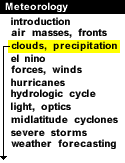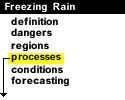
|
Freezing rain can develop either through ice crystal processes or supercooled warm-rain processes. Ice crystals high in the atmosphere grow by collecting water vapor molecules, which are sometimes supplied by microscopic evaporating cloud droplets. In the figure below, the blue line represents the temperature of the atmosphere and the black line represents the 0C (32F) isotherm (a line of equal temperature). When the blue line is to the right of the black line, the atmosphere is warmer than 0C and when the blue line is to the left, the atmosphere is colder than 0C.
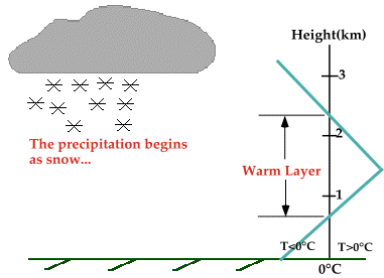
As the snow falls, it encounters a layer of warm air where snow and ice particles completely melt and collapse into raindrops.
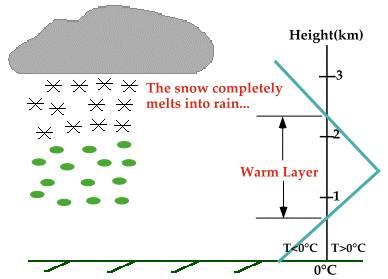
As the raindrops approach the ground, they encounter a layer of cold air and cool to temperatures below 0C. However, since the cold layer is so shallow, the drops themselves do not freeze, a phenomena called supercooling (or forming "supercooled raindrops"). The supercooled raindrops are raindrops that are colder than 0C and freeze on contact when they strike the ground.
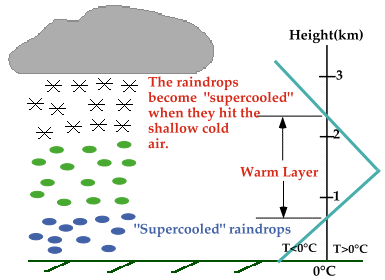

Freezing Rain |
|

warm-rain |


